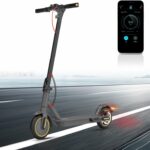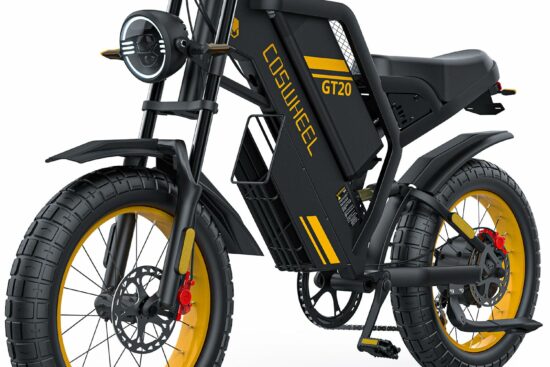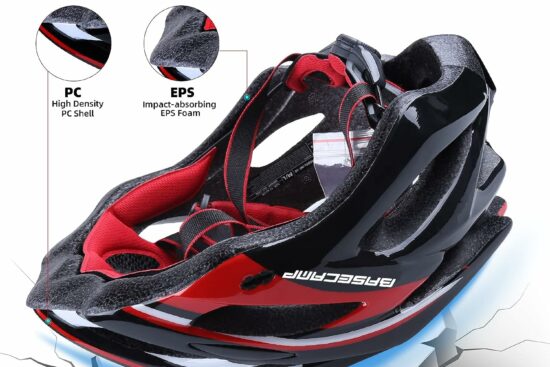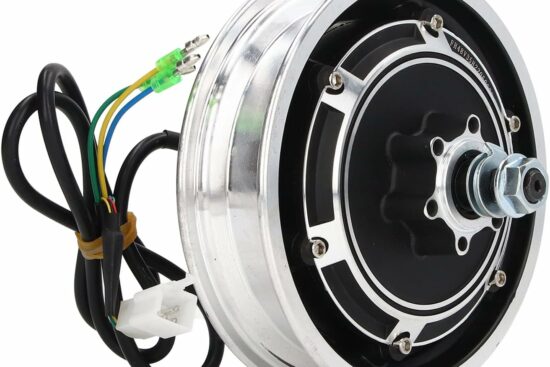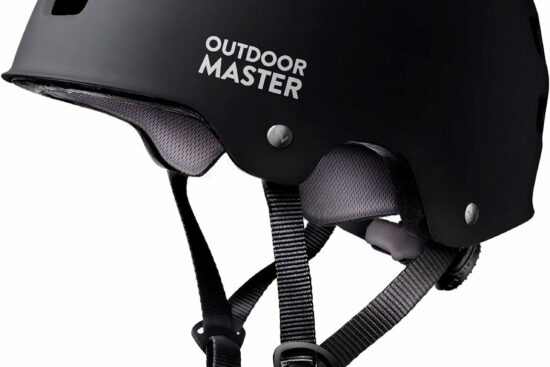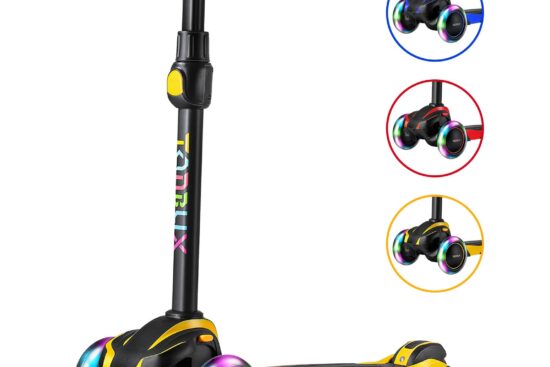
Electric bikes are becoming an increasingly popular mode of transportation, especially in urban areas where traffic congestion is a persistent issue. However, choosing the right electric bike motor can be a daunting task, given the wide variety of options available in the market. In this article, we will explore the different types of electric bike motors, ranging from hub motors to mid-drive motors, to help you make an informed decision when purchasing your next e-bike.
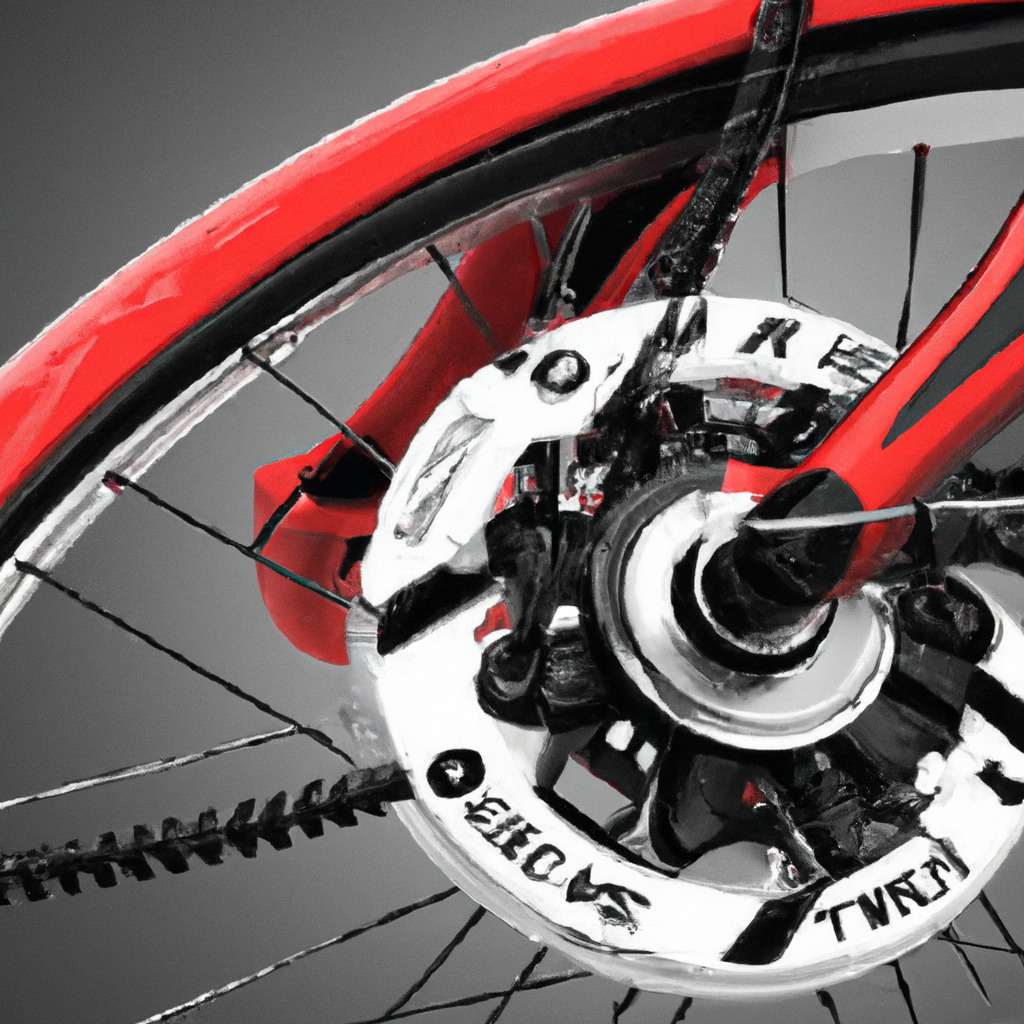
1. Hub Motors
Hub motors are one of the most common types of electric bike motors. They are located in the center of either the front or rear wheel and provide propulsion by directly driving the wheel. There are several different types of hub motors, including brushed, brushless, direct drive, and geared hub motors.
1.1 Brushed Hub Motors
Brushed hub motors are the simplest and most basic type of hub motors. They consist of a central rotor surrounded by magnets and stationary coils, known as the stator. The brushes and commutator of these motors transfer electricity to the coils, creating a magnetic field that causes the rotor to spin. Despite their simplicity, brushed hub motors tend to be less efficient and have shorter lifespans compared to other types of hub motors.
1.2 Brushless Hub Motors
Brushless hub motors, as the name suggests, do not have brushes or a commutator. Instead, they rely on electronic controllers to deliver power to the stator coils in a more efficient manner. Brushless hub motors offer several advantages over brushed motors, including higher efficiency, improved durability, and lower maintenance requirements. They are also quieter and produce less heat during operation.
1.3 Direct Drive Hub Motors
Direct drive hub motors, also known as gearless hub motors, have a larger and heavier design compared to other hub motors. They operate without any internal gearing, which means the motor itself directly drives the wheel. Direct drive hub motors offer several advantages, such as higher torque output and enhanced regenerative braking capabilities. However, their larger size and weight can affect the overall handling and maneuverability of the electric bike.
1.4 Geared Hub Motors
Geared hub motors utilize a combination of gears within the motor to drive the wheel. These motors are typically smaller, lighter, and more efficient than direct drive hub motors. The gears inside the motor allow for a higher wheel rotation speed compared to the actual motor rotation speed. Geared hub motors provide improved acceleration and hill climbing abilities, making them a popular choice for electric mountain bikes and urban commuting.
2. Mid-Drive Motors
Unlike hub motors, mid-drive motors are located at the crankshaft of the electric bike, where the pedals are attached. This positioning allows the motor to directly drive the bike’s drivetrain, providing a more natural riding experience.
2.1 Benefits of Mid-Drive Motors
One of the main advantages of mid-drive motors is their ability to leverage the bike’s existing gears. By powering the drivetrain directly, mid-drive motors offer better torque control and improved efficiency, especially on hilly terrains. This makes them particularly well-suited for off-road and mountain biking. Additionally, the centralized position of the motor provides better weight distribution, resulting in enhanced stability and handling.
2.2 Popular Mid-Drive Motor Brands
There are several renowned mid-drive motor brands in the electric bike industry. Bosch is a leader in producing high-quality mid-drive motors known for their performance and reliability. Shimano is another well-known brand that offers a range of mid-drive motor options. Brose and Yamaha are also notable manufacturers that provide mid-drive motors specifically designed for electric bikes.
3. Friction Drive Motors
Friction drive motors operate by pressing against the tire of the electric bike, creating friction that propels the bike forward. This type of motor is typically attached to the rear or front fork of the bike and requires contact with the tire to function.
3.1 How Friction Drive Motors Work
Friction drive motors consist of a motorized roller that is pressed against the tire. When the motor is activated, the roller begins to rotate, creating friction between itself and the tire. This friction generates forward propulsion, allowing the bike to move. Friction drive motors are often smaller and lighter than other types of motors, making them a popular choice for compact and portable electric bikes.
3.2 Advantages and Disadvantages of Friction Drive Motors
One advantage of friction drive motors is their simplicity and ease of installation. These motors can be easily attached to the bike’s fork, and they do not require any modification to the bike’s drivetrain. Additionally, friction drive motors tend to be quieter in operation and provide a smooth and natural riding experience. However, they may experience reduced efficiency and traction, especially on uneven or slippery surfaces. Furthermore, the constant contact between the motor roller and the tire can result in increased wear on the tire.
4. Crank Drive Motors
Crank drive motors, also known as mid-motor or bottom bracket motors, are similar in concept to mid-drive motors. These motors are located at the bottom bracket, where the crank arms connect to the bike’s frame.
4.1 Power Delivery in Crank Drive Motors
Crank drive motors deliver power directly to the bike’s drivetrain through the crank arms. As the rider pedals, the motor assists by providing additional torque. This integrated power delivery system allows for a seamless and more natural riding experience, as the motor output is synchronized with the rider’s pedaling cadence.
4.2 Crank Drive vs. Hub Motors
Crank drive motors offer several advantages over hub motors. By driving the drivetrain directly, crank drive motors provide a more balanced and efficient power delivery, especially on hills and uneven terrains. They also utilize the bike’s existing gears, allowing for better control and adaptability to different riding conditions. However, crank drive motors tend to be more expensive and require specialized frames with integrated bottom bracket motor mounts. They may also require more maintenance due to their complex design.
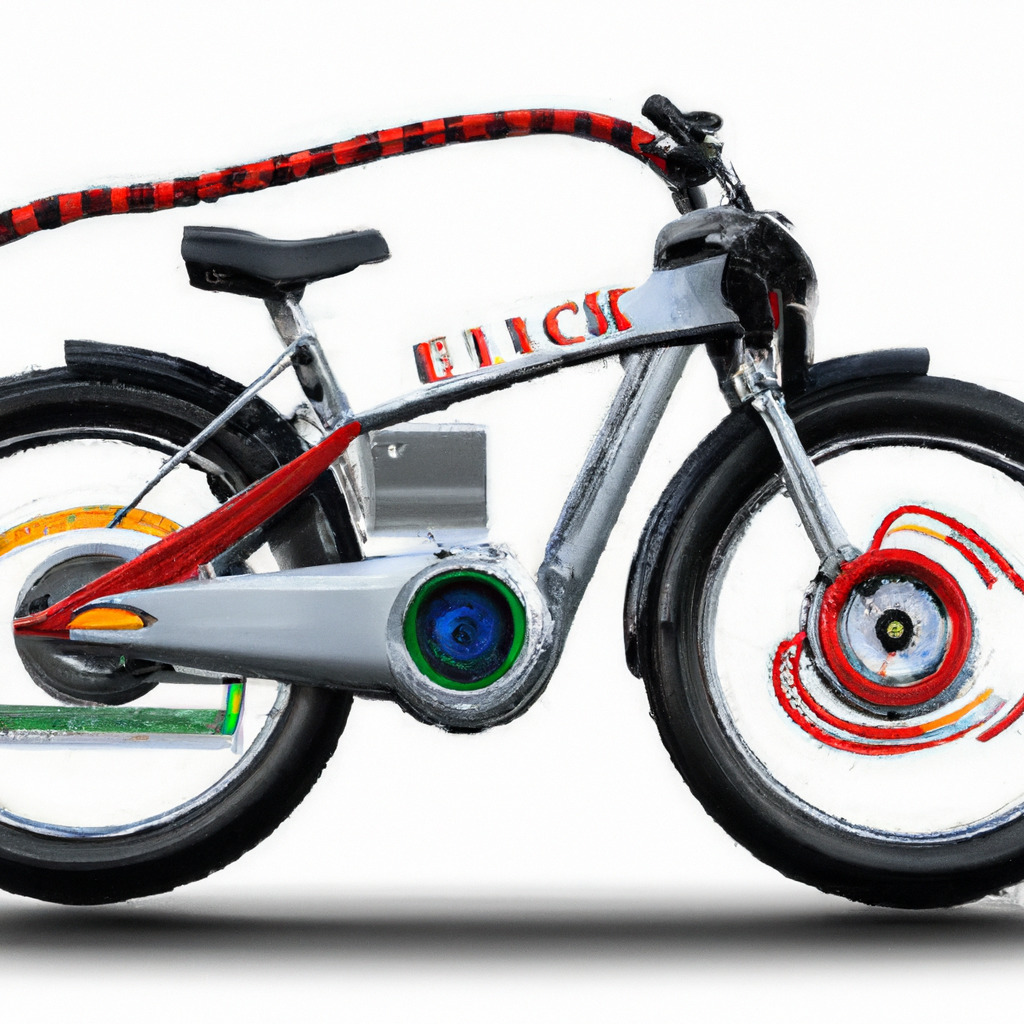
5. Torque Sensors
Torque sensors are a vital component in electric bike motors, regardless of the motor type. These sensors measure the amount of force or pressure applied to the pedals and transmit this information to the motor controller, which adjusts the motor assistance accordingly.
5.1 Importance of Torque Sensors
Torque sensors play a crucial role in determining the level of motor assistance provided to the rider. By accurately measuring the rider’s pedaling effort, torque sensors enable a seamless and intuitive power delivery system. This ensures that the electric bike provides the right amount of assistance based on the rider’s input, resulting in an efficient and natural riding experience.
5.2 How Torque Sensors Work
Torque sensors detect the force or pressure exerted on the pedals through strain gauges or similar technologies. When the rider applies force to the pedals, the strain gauges or sensors measure the deformation or change in resistance, translating it into a torque value. This torque information is then relayed to the motor controller, which adjusts the motor assistance based on the rider’s input.
5.3 Torque Sensors vs. Cadence Sensors
While torque sensors measure the amount of force applied to the pedals, cadence sensors focus on the rotation speed or cadence of the rider’s pedaling. While both types of sensors provide valuable information for motor assistance, torque sensors offer a more sophisticated and precise measurement of the rider’s effort. They allow for a more intuitive and responsive power delivery, adapting to changes in pedaling force in real-time. Cadence sensors, on the other hand, provide a simpler measurement of pedaling speed and are often used as a cost-effective alternative to torque sensors.
6. Cadence Sensors
Cadence sensors are commonly used in electric bike motors to measure the rotation speed or cadence of the rider’s pedaling. While not as advanced as torque sensors, cadence sensors provide valuable information for motor assistance.
6.1 Cadence Sensors in Electric Bike Motors
Cadence sensors typically consist of a magnet mounted on the crank arm and a sensor mounted on the bike’s frame. As the rider pedals, the magnet passes by the sensor, generating a signal that indicates the rotation speed. This information is then used by the motor controller to determine the level of assistance provided by the motor. Cadence sensors are widely used in electric bike motors due to their simplicity and cost-effectiveness.
6.2 Limitations of Cadence Sensors
While cadence sensors provide a basic measurement of pedaling speed, they do not take into account the force or effort exerted by the rider. This can result in a less intuitive and responsive power delivery compared to torque sensors. Cadence sensors may also struggle to accurately measure pedaling speed during sudden changes in cadence or when the rider is coasting without pedaling.
6.3 Cadence Sensors vs. Torque Sensors
The choice between cadence sensors and torque sensors depends on the desired level of motor assistance and the type of riding experience preferred. Cadence sensors offer a simple and cost-effective solution for basic motor assistance, particularly in urban commuting or leisure riding. Torque sensors, on the other hand, provide a more advanced and precise measurement of the rider’s effort, resulting in a more intuitive and natural riding experience, especially for off-road and performance-oriented riding.
7. Dual Motor Systems
Dual motor systems, as the name suggests, utilize two motors instead of one to provide propulsion to the electric bike. These systems offer several advantages, including improved torque, increased power, and enhanced traction.
7.1 Benefits of Dual Motor Systems
One of the main benefits of dual motor systems is the increased torque and power output. By using two motors in parallel, the electric bike can generate more propulsion force, allowing for better acceleration and hill climbing capabilities. Dual motor systems also provide enhanced traction, especially in off-road or slippery conditions, as power can be distributed between the front and rear wheels. Additionally, the redundancy provided by two motors increases the reliability and fault tolerance of the system.
7.2 Difference Between Parallel and Series Dual Motor Systems
Dual motor systems can be configured in either parallel or series setups. In a parallel configuration, both motors operate independently and provide power to their respective wheels. This setup is commonly used in electric mountain bikes and recreational off-road bikes. On the other hand, in a series configuration, both motors work together to power a single wheel, typically the rear wheel. This configuration is often found in high-performance electric bikes, providing increased power output and torque.
8. Step-Through Electric Bike Motors
Step-through electric bike motors are specifically designed to fit within the unique frame geometry of step-through or low-step electric bikes. These motors offer the same propulsion capabilities as traditional electric bike motors but are adapted to fit the specific requirements of step-through frames.
8.1 Motors Designed for Step-Through Frames
Step-through electric bike motors are typically smaller in size and designed to fit within the limited space available in the frame. These motors often have a lower profile and are specifically engineered to integrate seamlessly with the step-through design, ensuring ease of mounting and dismounting for riders. They may also have modified torque or power outputs to suit the intended use of step-through bikes, which are commonly used for urban commuting or leisure riding.
8.2 Considerations for Step-Through Bike Motors
When choosing a step-through electric bike motor, it is essential to consider the specific requirements of the frame and the intended use of the bike. The motor should fit within the available space without compromising the structural integrity of the frame. Additionally, the power and torque output of the motor should align with the desired riding experience and terrain conditions. Considering these aspects will ensure optimal performance, safety, and overall compatibility with the step-through electric bike.
9. Fat Tire Electric Bike Motors
Fat tire electric bikes are designed for off-road adventures and riding on challenging terrains. To meet the demands of these bikes, specialized fat tire electric bike motors have been developed.
9.1 Specialized Motors for Fat Tire Bikes
Fat tire electric bike motors are typically designed to accommodate the wider and larger tires found on these bikes. These motors often have a higher torque output to provide better traction and power on off-road trails or loose surfaces. Additionally, the construction of these motors may take into consideration the increased weight and potential impacts associated with off-road riding. Fat tire electric bike motors are engineered to withstand the rugged terrain and offer reliable performance in demanding conditions.
9.2 Advantages of Fat Tire Electric Bike Motors
The specialized design of fat tire electric bike motors offers several advantages for off-road enthusiasts. The wider tires and higher torque output provide enhanced traction and stability, allowing riders to conquer challenging terrains with confidence. The robust construction of the motors ensures durability and reliability, even in harsh off-road conditions. Fat tire electric bike motors open up exciting possibilities for riders seeking adventure and exploration beyond traditional biking routes.
10. Folding Electric Bike Motors
Folding electric bikes are compact and portable, making them ideal for commuters and urban dwellers. The motors used in these bikes are specifically designed to fit within the limited space constraints of foldable frames.
10.1 Compact Motors for Folding Bikes
Folding electric bike motors are designed to be lightweight and compact, allowing them to be easily integrated into the foldable frame. These motors often have smaller dimensions and reduced power outputs compared to motors used in larger electric bikes. The compact motors ensure that the foldable electric bike remains portable and easy to carry, while still providing sufficient assistance for urban commuting.
10.2 Benefits of Folding Electric Bike Motors
The compact motors used in folding electric bikes offer several benefits for commuters and urban riders. The smaller size and lower weight of these motors make the bike easier to carry and store when not in use. The reduced power output also contributes to better energy efficiency, allowing for longer battery life and increased range. Folding electric bike motors enable riders to navigate urban environments with ease, combining the convenience of a folding bike with the assistance of an electric motor.
In conclusion, electric bike motors come in various types, each offering unique benefits and performance characteristics. Hub motors are commonly found in electric bikes and can be either brushed or brushless, direct drive or geared. Mid-drive motors provide a more natural riding experience by powering the drivetrain directly. Friction drive motors utilize tire contact to propel the bike forward. Crank drive motors deliver power directly to the drivetrain through the crankshaft. Torque sensors and cadence sensors play important roles in determining motor assistance, with torque sensors offering more precise measurement. Dual motor systems provide increased torque, power, and traction. Step-through, fat tire, and folding electric bike motors are specifically designed to meet the requirements of different bike frames and riding styles. Understanding these different types of electric bike motors allows riders to make informed decisions when choosing their ideal electric bike.





